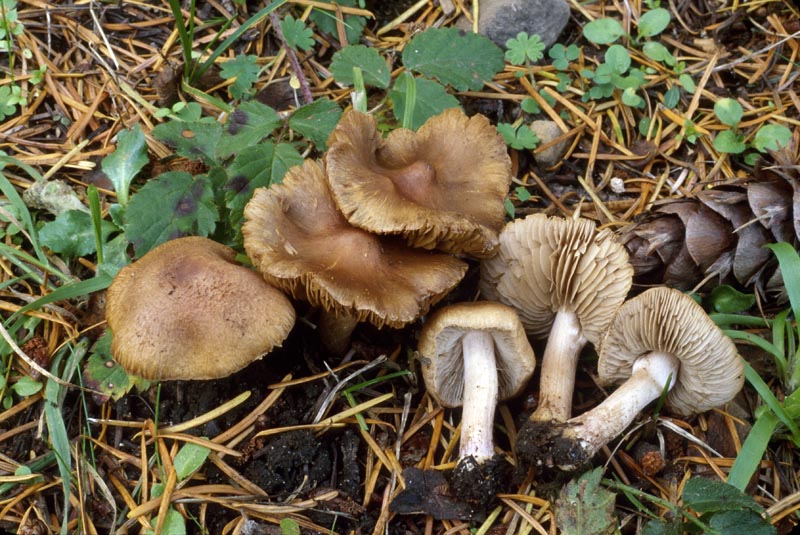Distribution: The distributions of I. pusio and the other lilac-stiped species are not well known, in part because of the differing interpretations of the taxa.
Habitat: near hardwoods and conifers
Conservation Status: Not of concern
Inocybe pusio (= I. obscura var. obscurissima Heim) is one of a small number of inocybes in which the stipes are lilac, at least in part (and then at the apex). This color can fade quickly, so having young fruitbodies is essential for a correct identification. The cap is relatively dark brown and coarsely fibrillose to somewhat scaly. Gills are light gray to slightly lilac-tinged when young, and become darker brown with age. The stipe is fibrillose, lilac when young (at least the upper part), brownish in the lower part with age, and the upper part powdery and often remaining whitish. The odor is faintly spermatic. The spores are smooth and somewhat almond-shaped, 7.5--11 x 4.5--6 µm; cheilocystidia and pleurocystidia are thick-walled with narrow, crystal-encrusted necks, and the cheilocystidia are interspersed with thin-walled, club- or pear-shaped cells. Similar species include I. cincinnata, I. obscura, I. obscuroides, and I. phaeocomis with red or brown fibrillose-scaly stipe, and I. griseolilacina, with a more grayish or slightly lilac overall color, Pelargonium-like odor, and non-powdery stipe. I. lilacina is lilac all over, at least when young.
PNW Herbaria: Specimen records of Inocybe pusio in the Consortium of Pacific Northwest Herbaria database
CalPhotos: Inocybe pusio photos



